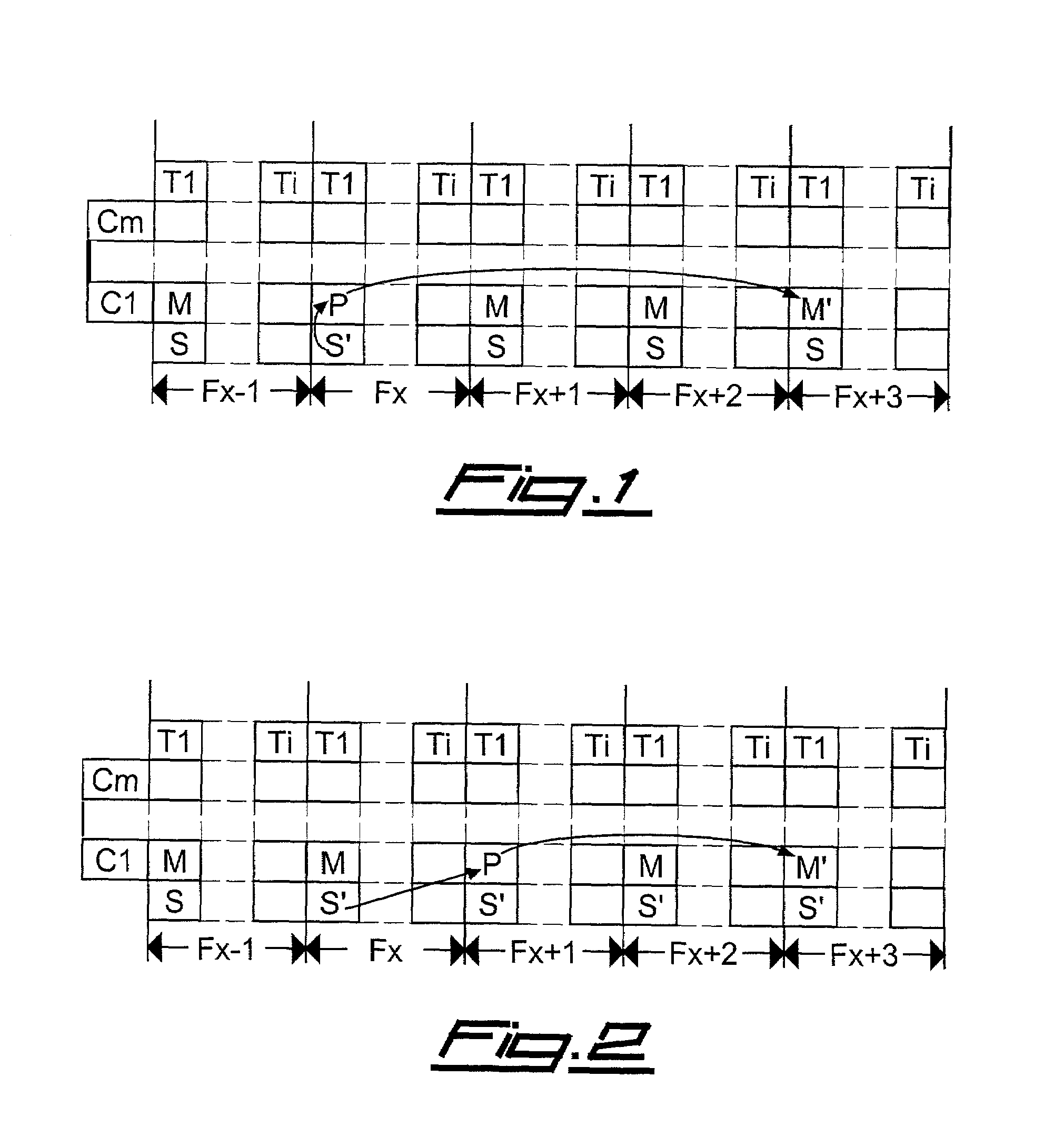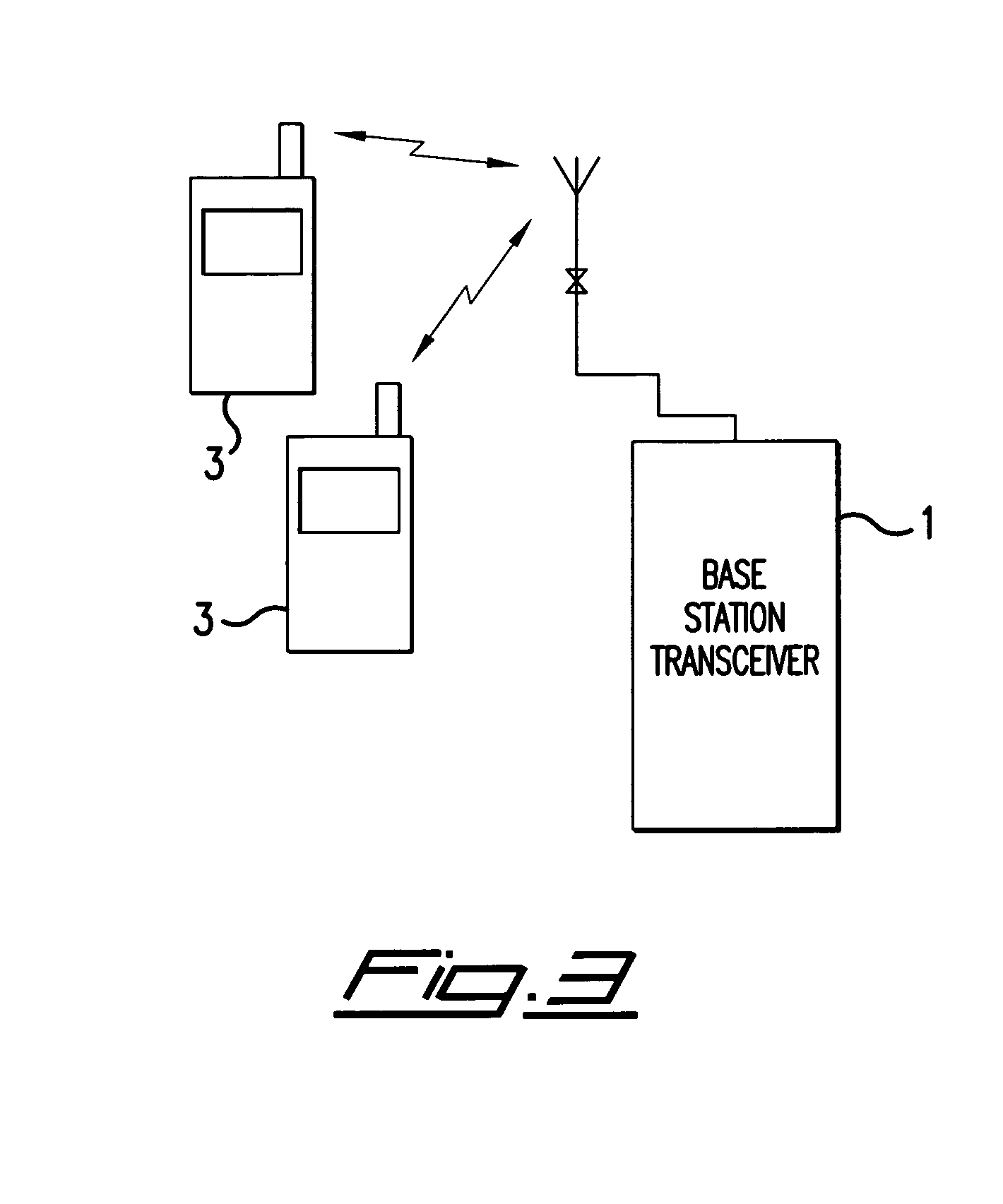Method and system to synchronize mobile units to a base transceiver station
a mobile unit and transceiver technology, applied in the direction of synchronization arrangement, radio transmission, electrical equipment, etc., can solve the problems of unprofitable code, reduce etc., and achieve the best self-correlation and cross-correlation properties of the synchronization signal, and the effect of not decreasing the neat capacity of the transmission channel
- Summary
- Abstract
- Description
- Claims
- Application Information
AI Technical Summary
Benefits of technology
Problems solved by technology
Method used
Image
Examples
Embodiment Construction
[0021]With reference to FIGS. 1 and 3, we can notice that in a first embodiment of the method according to the present invention at least one base station 1 transmits the radio signals that can be received by one or more user equipment 3 in the known manner, and vice versa. Said signals are subdivided into a plurality of frames Fn, for instance Fx−1, Fx, Fx+1, Fx+2, Fx+3, in their turn subdivided into a plurality of timeslots Tn, for instance from T1 to Ti, and into a plurality of access codes Cn, for instance from C1 to Cm. Furthermore, the base transceiver stations transmit a synchronization signal S in a coded channel in a manner different from the other channels, for instance phase modulating the radio carrier according to the BPSK technique (Binary Phase Shift Keying).
[0022]This synchronization signal S includes in the known way a sequence of modulation elementary units, enabling to identify the group of codes of the specific base transceiver station, as well as the timeslot an...
PUM
 Login to View More
Login to View More Abstract
Description
Claims
Application Information
 Login to View More
Login to View More - R&D
- Intellectual Property
- Life Sciences
- Materials
- Tech Scout
- Unparalleled Data Quality
- Higher Quality Content
- 60% Fewer Hallucinations
Browse by: Latest US Patents, China's latest patents, Technical Efficacy Thesaurus, Application Domain, Technology Topic, Popular Technical Reports.
© 2025 PatSnap. All rights reserved.Legal|Privacy policy|Modern Slavery Act Transparency Statement|Sitemap|About US| Contact US: help@patsnap.com



